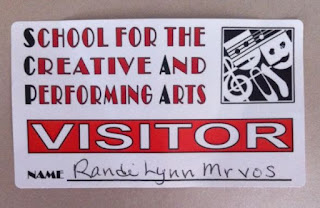Perseverance and a Lap Full of Pups
Many years ago, I used to save all of my rejections.
I'd stare at the stack and wonder: Where did I go wrong? Why didn’t the editor like it? Should I quit writing?
Those questions cropped up when one of my favorite stories was repeatedly turned down. I loved this story. My protagonist owned a Basenji, an amazing barkless dog that vocalizes by yodeling.
All of these rejections made me sad and angry. I thought the story was worthy of publication. So, my husband told me not to give up. He suggested that I write a nonfiction piece on this breed because nonfiction was less subjective. He made a good point.
I did more research and discovered many interesting facts. For instance, Basenjis originated in the Democratic Republic of Congo in Africa, where they earned the nickname "the jumping up and down dog." They were hunters and would leap high over the tall native grasses of their homeland to locate prey.
After compiling the information and then composing the article, I submitted "The Barkless Dog" to Wee Ones, an ezine that accepted nonfiction stories for children. The editor emailed me a few days later to say she had never heard of this breed and that the article was fascinating. She promptly sent an acceptance!
This was my first published article. For a writer, nothing feels more amazing. And yet at the same time, I got panicky. The editor needed photos before the piece could be published.
I searched websites and contacted Basenji webmasters across the country for photographs. And the response was overwhelming. These people loved their dogs and everyone wanted to share their pictures with me for the article.
One of the Basenji breeders, Carole Kirk invited me for a visit. She is pictured above. Carole stated on her website that she lived in Ke
A week later, my daughter and I travelled to Versailles, Kentucky, where I met Carole, four adult Basenjis, and a handful of pups—seven, to be exact—for a Basenji party. Friends of Carole brought their Basenjis, too.
I lost count of the total number of dogs. All I can say is we were surrounded by yodeling, curly-tailed dogs—all of them wanting to be petted AT THE SAME TIME!
We spent the afternoon playing with Carol's award-winning dog Chance and her gentle, soft-furred pups. These dogs were wicked smart, energetic, and entertaining. And true to their nickname, they did a lot of jumping up and down.
It's been over ten years since the publication of "Barkless." When I think of that article, it reminds me that I had been showered with many rewards.
I worked with a great editor, who even wrote me a thank-you note.
I learned about a remarkable breed of dogs.
And I met a gracious and fascinating dog owner and her adorable pets.
But none of this would have been possible if I had continued questioning my ability. I would have never experienced the thrill of publication or known the joy of playing with pups if I had given up and not followed my husband's advice.
Perseverance led to many good things: an acceptance, a boost in confidence, and a lap full of pups.






















